 |
The Importance of Flexibility
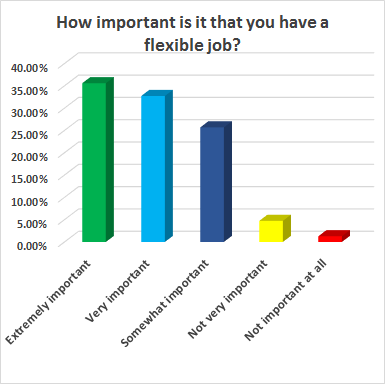
A clear pattern emerges when people are asked “How important is it that you have a flexible job?” The majority (35.57%) find it extremely important, and just around 5% feel that it’s somewhere between “not very important” and “not important at all.”
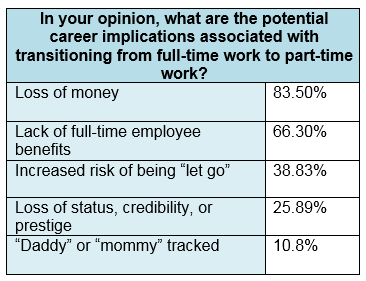
According to the survey, participants have a pretty clear understanding of the potential drawbacks to moving from a full-time to a part-time position, including loss of money (83.50%), loss of benefits (66.30%) and the potential of being “let go” (38.83%). Interestingly, despite a keen awareness of the potential downsides of going part time, the majority of Americans would still do so in the interest of flexibility. This alone goes to show how important flexibility is for today’s workforce.
Learn how to keep your employees happy and working with the second HR Playbook from BLR®. Check out Employee Retention and Satisfaction: How to Attract, Retain, and Engage the Best Talent at Your Organization.
Who Participated
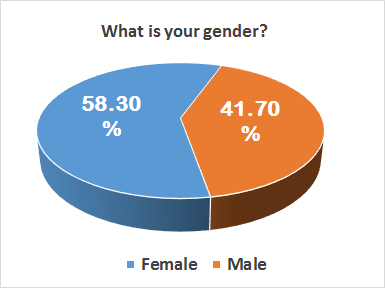
The majority of the survey participants were female (58.30%). When it comes to age, the participant pool was pretty evenly spread, with about one-quarter of respondents coming from each of the four age groups. The least represented group was aged 60 and over with only 20.65%.

As you can see, the participants come from a wide variety of industries. The top-represented industries were education at 16.11%, health at 15.02%, and service at 14.33%. The least-represented industries were recreation (1.68%), legal (2.67%) and media (2.47%).
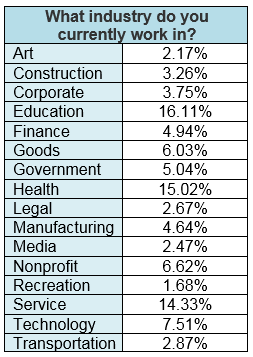
Full-Time or Part-Time
Finally, the survey had a nearly even split between part-time workers (50.59%) and full-time workers (49.41%).
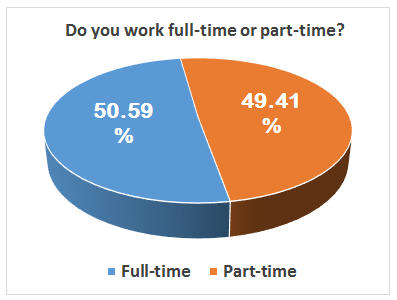
Of course, deciding whether to hire part-time or full-time isn’t the only thing you have to worry about—it’s never just one thing in the world of HR! Retention and turnover are also on every HR manager’s front burner. Turnover is your organization’s most debilitating disease. Retention—of the people you want to retain—is the backbone of your organization’s success. Gain an advantage with our guide, Employee Retention and Satisfaction: How to Attract, Retain, and Engage the Best Talent at Your Organization. Check it out now!
This second HR Playbook from BLR explores the many facets of retention and engagement, giving practical guidance, new approaches, and proven methods for achieving excellence in these challenging times.
Once you have top talent, be sure to retain them! It’s all in BLR®’s HR Playbook, Employee Retention and Satisfaction: How to Attract, Retain, and Engage the Best Talent at Your Organization. Learn more now. Learn more now.
Learn about the following crucial issues regarding retention and employee satisfaction:
- The high cost of undesirable turnover
- Recruiting and hiring for the long haul
- Management’s role in retention
- The value of strong mentoring
- Perks that employees truly value
- And much more!
When do you start thinking about retention? On day one. Start strategizing today with Employee Retention and Satisfaction: How to Attract, Retain, and Engage the Best Talent at Your Organization.
Click here to learn more or order your copy today!
